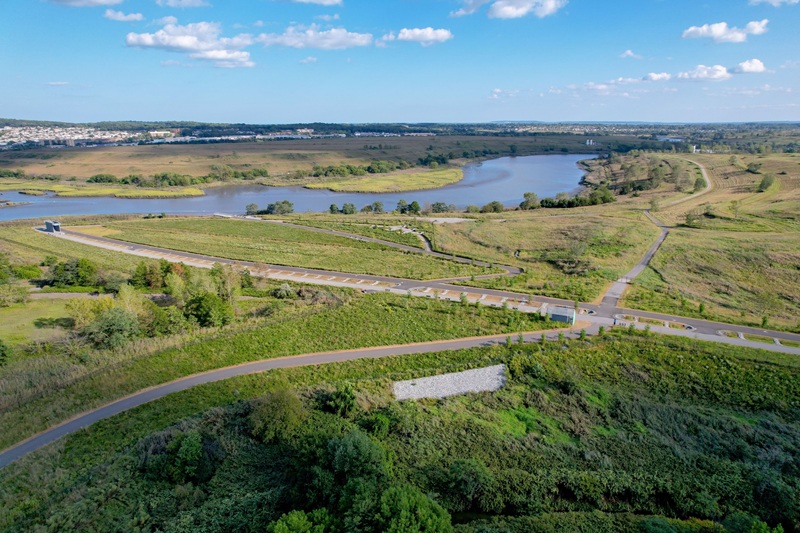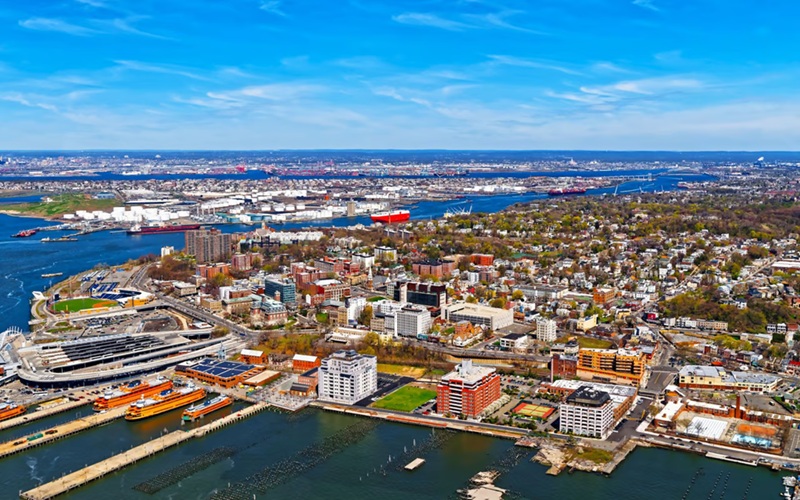
Freshkills Park, located in the heart of Staten Island, is one of the most exciting and ambitious environmental reclamation projects in the United States. Once the site of the world’s largest landfill, Freshkills is being transformed into a sprawling, 2,200-acre public park that promises to offer a diverse range of recreational opportunities, environmental education, and green spaces for generations to come.
A History of Transformation
The Fresh Kills Landfill opened in 1948 and, for over 50 years, served as New York City’s primary landfill. At its peak, it received an average of 29,000 tons of garbage per day and was a major environmental concern. The landfill was closed in 2001, marking the beginning of a large-scale cleanup and restoration project.
In 2007, the Freshkills Park Master Plan was initiated with the goal of transforming the site into a sustainable park that would revitalize the area and restore its ecological health. The project is part of a broader effort to clean up the landfill and repurpose the land for public use, focusing on environmental restoration, sustainability, and public access.
Park Design and Features
Freshkills Park is being developed in phases, with different sections of the park opening to the public as they are completed. Once finished, it will be larger than Central Park and will feature a wide array of facilities and amenities designed for outdoor recreation, education, and environmental stewardship.
Environmental Restoration
One of the key objectives of Freshkills Park is ecological restoration. The site is being transformed from a toxic landfill into a sustainable environment with thriving habitats for wildlife. The park’s designers have been working to restore native habitats, including wetlands, woodlands, and meadows, which will support a diverse range of plants and animals. The ongoing restoration efforts are also focused on improving the water quality in nearby waterways and mitigating the effects of stormwater runoff.
Recreational Opportunities
Once completed, Freshkills Park will offer a broad range of recreational opportunities for visitors. These will include:
- Hiking and Biking Trails: The park will feature miles of scenic trails for walking, hiking, and biking, providing visitors with access to the park’s varied landscapes.
- Birdwatching and Wildlife Observation: The restored wetlands and meadows will provide a habitat for numerous bird species, making Freshkills Park an excellent destination for birdwatchers and nature enthusiasts.
- Sports Fields and Playgrounds: The park will include designated areas for sports such as soccer, baseball, and other recreational activities, as well as playgrounds for children.
- Waterfront Access: Plans are in place to enhance access to the water, offering opportunities for kayaking, fishing, and other water-based activities along the park’s waterfront areas.
- Picnic Areas and Open Green Spaces: For families and groups, there will be plenty of open spaces for picnics, relaxation, and outdoor gatherings.
Educational Programs and Environmental Learning
Freshkills Park will also serve as an educational hub, offering programs focused on sustainability, environmental stewardship, and the history of the site. Visitors can engage in activities that teach them about waste management, ecological restoration, and the challenges and successes of transforming a former landfill into a thriving park.
The park will host various environmental education initiatives, allowing school groups, local organizations, and individuals to learn about conservation, green infrastructure, and sustainable practices. Educational signage, interactive exhibits, and guided tours will further enrich the visitor experience.
Sustainability and Green Infrastructure
Sustainability is at the core of Freshkills Park’s design. The park incorporates green infrastructure techniques such as rain gardens, bioswales, and permeable surfaces to manage stormwater and promote water conservation. These features help to reduce the environmental impact of the park while also enhancing its beauty and functionality.
Community Impact
Freshkills Park has had a significant positive impact on the local community, providing residents with a much-needed green space in an area that was once dominated by a landfill. The park has already begun to create jobs in environmental restoration, construction, and park management, benefiting the Staten Island economy. It also promotes public health by offering a clean, safe environment for outdoor activities.
Access and Future Development
While much of Freshkills Park is still under development, some parts of the park are already open to the public. These areas include a section of the park with hiking trails and birdwatching opportunities. Over time, more sections will be completed and accessible to visitors. The park’s design is flexible and adaptable, allowing for future growth and development in response to community needs and environmental considerations.
Conclusion
Freshkills Park is a stunning example of environmental transformation, turning an industrial wasteland into a thriving, sustainable green space. With its mix of recreational amenities, wildlife habitats, and educational opportunities, Freshkills Park is poised to become one of the premier parks in New York City. It stands as a testament to the power of environmental restoration and sustainable development, offering both local residents and visitors a beautiful, functional space to enjoy for generations to come.

